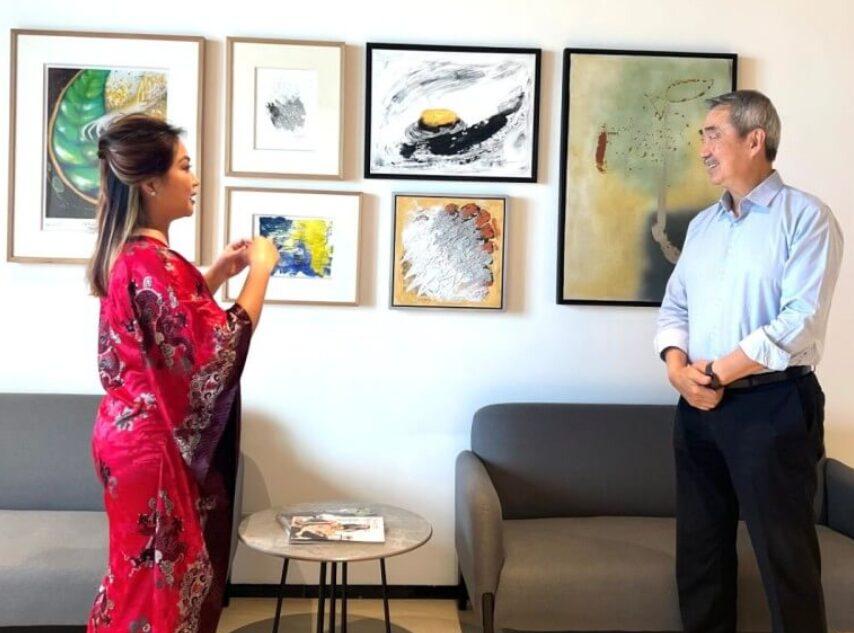The Filipinos as Roman Catholic devotees are known to be overly zealous and extremely “fanatic” believing that whatever their intentions will be duly answered and rewarded. Being a nation with a predominantly Roman Catholic population, the Philippines is consistently regarded as a very religious nation… the only (Catholic) one in the Far East and the fourth in the world after Brazil, Mexico, and the US.
Where there is faith, there is devotion… extreme devotion. Filipinos are innately sentimental and emotional that they turn to the Greater One for aid and salvation during times of need and desperation. One of the most popular religious icons which blessings and intercessions are most sought-after (aside from the Mother of Perpetual Help during Wednesdays in Baclaran, St. Jude during Thursdays in Mendiola, Santo Nino in Tondo during first Fridays, the Virgin of Penafrancia in Naga, the Virgin of Good Voyage in Antipolo, and Our Lady of Manaoag in Pangasinan) is indubitably the Black Nazarene of Quiapo during Fridays.
The life-size image of the Black Nazarene, which is five feet tall (kneeling) and weighs about 50 kilos bearing an 8-feet long cross and believed to have been originally carved by an Aztec carpenter, is made of dark-colored wood and sailed to Manila all the way from Mexico. The color of the religious statue has always been a puzzle to many especially among first time devotees.
There arose numerous theories to justifying the statue’s unusual color. Early belief was that the galleon carrying the newly-carved statue caught fire that turned its original light color into black or burnt tone. Others said that it was carved from teakwood, a type of wood that gradually turns black in the passing of time. But for whatever truth there is and whichever theory justifies the cause, for the millions of the Black Nazarene devotees, it’s always the very sanctifying spirit attached to the statue that truly matters. It’s not the totem per se but the very spirit represented by the image that they worship and venerate.
The Black Nazarene was brought to Manila by the first group of Augustinian Recollect friars on May 31, 1606 and on September 10, 1606, it was initially housed in the first built Recollect Church in Bagumbayan, now Rizal Park.
After two years the image was transferred to a much bigger place to accommodate its growing number of devotees. The Recollect fathers dynamically promoted devotion to the suffering of our Lord that the image represented and duly created the establishment of the Cofradia de Santo Cristo on April 21, 1621. The confraternity finally obtained Papal approval on April 20, 1650 from Pope Innocent XI.
In the year 1787, after more than a century, Archbishop Basilio de Santas Junta y Rufina ordered the transfer of the image to the Church of Quiapo under the patronage of Saint John the Baptist. Since then, Quiapo Church, now a Minor Basilica, has been the permanent shrine of the Black Nazarene.
The Black Nazarene has overcome a number of miraculous events. It has survived the great fires that destroyed and gutted Quiapo Church in 1791 and 1929, the horrendous earthquakes of 1645 and 1863, and the destructive Bombing of Manila in 1945 during World War II.
As time went by, the already numerous devotees kept on multiplying in folds. Hordes and multitudes of millions kept coming back every January 9, the Feast of the Black Nazarene, barefooted (to symbolize humility, penance, and an imitation of Christ’s journey to Calvary while bearing the heavy cross), and armed not only with white towels and unconditional faith, but with tons of energy to endure the day-long procession under sweltering heat and sometimes, sudden downpour.
To keep and maintain the most revered statue, caretakers daily apply oil to preserve its texture and change its garments seven times a year. Marcela Manlaqui, a seamstress and embroidery master, has been a long time devotee and wardrobe maker of the Black Nazarene. She personally hand embroiders every garment with gold thread that takes from 2 to 3 months to finish and in some cases, shorter when she has a helper.
The Black Nazarene is publicly exposed via processions on three annual occasions only: on New Year’s Day, Good Friday, and January 9 to commemorate the first novena, the official transfer or traslacion (the solemn transfer of the black image from San Nicolas de Tolentino in Intramuros to Quiapo Church), and the enshrinement in its present Basilica.
The image paraded every January 9 is actually a hybrid: the body is from the original image and the head is a replica created by Filipino sculptor Gener Manlaqui. The braided hair is made up of dyed abaca and jusi fibers.
This year’s influx of devotees that attended the 6:00 A.M. mass celebrated by Luis Antonio Cardinal Tagle was estimated at more than 500 thousand but authorities expected the growing multitude to swell from fifteen to eighteen million. Incidentally, a similar image called “Cristo Negro” is venerated in Portobelo, Panama.
Devotees relentlessly struggled and exerted their mightiest efforts just to hold, kiss, or wipe the religious relic’s feet. From afar, one could witness the sea of faithful inching their way in the procession while chanting “Nuestro Jesus Nazareno” as they waved white towels and hankies… defying intense high temp, hunger, thirst, and possible stampede or untoward incident that could erupt anytime.
While 6,500 policemen and 1,300 traffic enforcers were strategically deployed, cellphone signals were jammed and drones were banned within the entire procession route to ensure security and whatever untoward communication activities might occur.
But no matter how strict and vigilant the authorities were, accidents and injuries are hard to prevent amid a mammoth crowd. The Health Department reported 301 persons treated, 127 injured, 16 from dizziness, and the most serious was an emergency of a man who fell from the andas (the carriage where the Black Nazarene was mounted) and was rushed to Makati Medical Center… while the Philippine Red Cross attended to more than a thousand of hypertension cases.
But for numerous enterprising Pinoys, this is one of the most opportune times to propel their business by selling souvenir items, foods and drinks while simultaneously fulfilling their religious obligation.
Nelson Lugue, a most-sought-after Black Icon sculptor from Calumpit, Bulacan does not have to wait for the Feast of the Black Nazarene to ply his wares for he’s been on the peak of his craft all year round. He uses baticuling or santol wood for the increasing orders. “These are hard local wood that neither rot nor easy prey for termites,” he said. “It takes from two to three months for a medium sized statue to finish but rewarding and fulfilling,” added the second-generation artist.
The Filipino Catholics are, by nature, known to be devoted and offer unconditional faith in their patron saint. The veneration and extreme devotion to their favorite saints is neither “fanaticism” nor idolatry of sort.
There were already documented and proven testimonies of healings, miracles, grants, and supplications attributed to the Black Nazarene that enticed more and more devotees. Their faith grows even stronger every day as they untiringly pour out their devotion to the miraculous Black Icon.
According to Monsignor Jose Clemente Ignacio, Rector of the Minor Basilica of the Black Nazarene: “Kissing or holding on to the statues isn’t worshipping at all…it is merely connecting to the Divine…to touch, and be touched by Heaven, itself!”
“It is a Filipino trait to always want to wipe, touch, kiss, or embrace sacred objects if possible. We Filipinos believe in the presence of the Divine in sacred objects and places. It is an expression of one’s faith…an expression of devotion. We all know we don’t worship statues. We worship God and these statues were made after God’s image. If these statues would bridge our gap with God… so, the religious practice continues,” he said.
From this writer’s point of view: There’s nothing questionable in the excessive display of devotion or over attachment to a religious statue or object, for even in our day to day routine, we treasure pictures of our loved ones and those dear to us. Enslaved by our zealous affection, we tend to kiss their photographs, place their framed images close to where we are, and annually celebrate occasions so special to us. That’s why I couldn’t understand why people could suddenly snap from the faith they were born with and instantly turn iconoclast and practice aniconism or the avoidance of the use of images for religious reasons.
But I’m not here to preach or judge. The freedom of worship and religion prevails in every democratic country: one is free to worship even an inchoate demi-god or an ubiquitous idol of his choice. For every one of us has the right to worship which ever god we prefer or choose… depending on which figure spiritually appeal to us or to whom we could totally commend our faith for salvation.
For comments and suggestions, please email to: gemini0646@yahoo.com.







